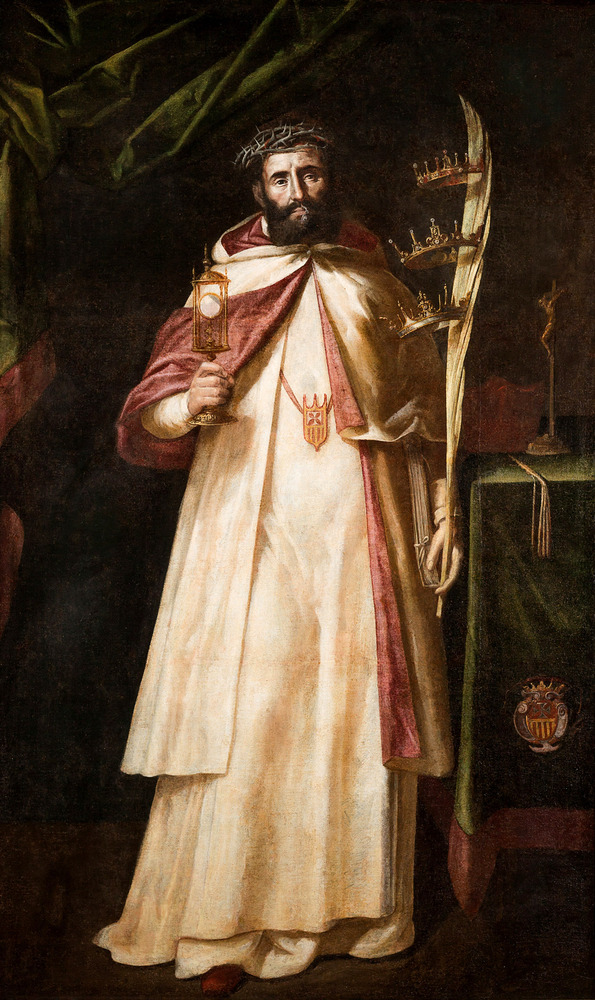Saint Raymond Nonnatus

Technical details
Description
Antonio del Castillo, an artist from Cordoba who worked in the Naturalist style of the early Baroque period, painted this portrait of Saint Raymond Nonnatus, a 13th-century saint of the Mercedarian order who devoted his life to liberating Christian hostages taken by the Moors in North Africa. The iconography perfectly captures the spirit of the Counter-Reformation that continued through the Baroque style, promoting devotion to the saints who intercede before God for the salvation of the faithful. There is no doubt that this painting was originally housed in a Mercedarian convent, and later in the church of La Rambla, in the province of Cordoba, and that it was painted by Castillo in the 1640s, before the saint's canonisation in 1657. Naturalism and enduring effects of Tenebrism are present in this painting of Saint Raymond, who wears the habit and scapular of the Order of Our Lady of Mercy, known as Mercedarians, but the lining of the habit is red, to show that he was made a cardinal. He wears a crown of thorns he received from Christ on his head, and his mouth is sealed with a padlock, which the Moors placed on him during his imprisonment in Algiers to silence his preaching. His left hand holds the palm of the martyrs, with the three crowns of chastity, eloquence and martyrdom. His right hand holds a small monstrance, which is a reference to the communion host he received from an angel on his deathbed.


